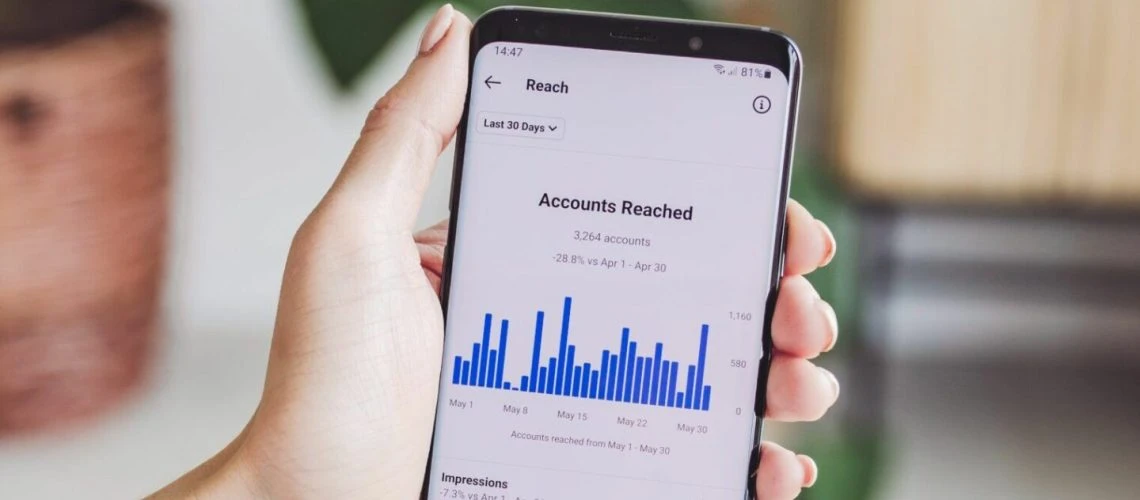Social media is so widely used across the globe that is essential to almost any business when creating a marketing strategy. Despite this, the return on investment of social media campaigns is difficult to measure. For example, you can’t definitely associate a particular Facebook post with a physical purchase or online conversion. Rather, you usually have to put faith in indirect measures and hope that your efforts are yielding results. This is why so many marketers fail to accurately quantify social media ROI. Luckily, there are ways to analyse your social media activity and measure the added value to your business and marketing efforts. Here are a few easy ways to assess the effectiveness of your social media marketing efforts:
Can you Measure the ROI of Your Social Media Marketing Strategy?
Yes! The above challenges are the reason why so many marketers find it challenging to accurately gauge their social media ROI. However, things don’t have to be that way! The good news is that there are ways to analyse your social media activity and assess the value it adds to your company. Let’s take a look at how you can measure the ROI of your social media in a few simple steps:
Define Your Roi Measurement Strategy
Understanding the methodology for measuring your social media ROI is extremely important before you can effectively implement a strategy. This is essentially a plan for how, when, and where you’ll track the return on investment from social media.
- What do you plan to measure?
- How are you going to measure it?
- When are you going to measure it?
The ‘what’ part is easy to understand. You’ll evaluate the impact of your social media efforts on your revenue. However, how you measure this effect will depend on your target market and business objectives. For instance, if your business is B2B, you might want to track how many leads are coming from social media. If you’re a B2C company, you may want to track sales made directly from social media. You can measure your social media ROI in a variety of ways. You can, for example, track website traffic, engagement or customer satisfaction.
Different Companies will measure ROI differently and so need different strategies:
- B2B companies might want to track how many leads are coming from social media.
- B2C companies may need to track sales made directly from social media.
Establish a Baseline
You must first establish a baseline before you can track how economical your social media strategy is. The results you expect can be your baseline. Without a baseline metric in place it can be very difficult to ascertain whether your social media efforts are providing sufficient return on investment. Luckily for you, the marketing data you already have can provide valuable insights. The expected volume of website traffic and engagement from your social media efforts can be calculated using pre-existing data. You can utilise this information to estimate sales and conversion rates. You must remember to include data on traffic, engagement, and sales previous to starting your social media marketing campaign to allow for a comparison. Following that, you’ll be able to observe changes in engagement, traffic, and sales as a result of your social media activity. This will provide you with precise and accurate baseline metrics.
A Baseline helps you to estimate future results, metrics, and sales and lets you know whether your Social Media is yielding results
Track KPIs
Now that your baseline has been created, it’s time to monitor your most crucial KPIs.
KPIs = Key Performance Indicators
KPI tracking describes the tools and procedures businesses employ to keep track of performance indicators. This involves capturing particular data and translating it into useful metrics that can be evaluated and published in clearly understandable charts and dashboards. They typically have something to do with consumer behaviour, like purchases, sales, leads, and recommendations.
You might wish to track a different set of KPIs depending on your aims. You might wish to keep track of the number of leads produced via social media if you run a B2B business and are trying to generate leads, for instance.
KPIs are what you monitor during your social media campaigns, they tell you how your social media efforts are performing and help you calculate your ROI
Track Ad-Equivalents and Behaviours
Your most crucial KPIs have been chosen, and you are monitoring them. It’s time to start tracking ad-equivalents and behaviours right now.
Software for tracking social media ads, like Sprout Social, can be used to monitor Facebook and Instagram ads as well as their equivalents (engagement generated by sponsored posts).
You may learn more about how visitors interact with your posts and sponsored content by using ad tracking. You can keep track of the number of shares, likes, and comments that each post receives.
Summary & Next Steps
In order to learn from your findings, you need to gather the relevant data and concisely summarise it to allow for a comprehensive analysis. This is an extremely important step in the process of measuring the return on investment from social media. You will have plenty of data at your disposal, including details about the posts you have made that received the highest engagement and those that require adjustment. You can then utilise this data to refine and retarget your next social media marketing campaign. Ask yourself if your social media efforts provide a desirable return on investment or if the strategy is not effective at all. Make sure to always reassess your social media plan and create a plan to improve and refine it. You can assess the return on investment from your social media by using these simple steps. Good luck, and remember that Atomic is always here to help.









